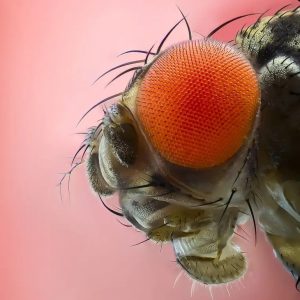Link About It: This Week’s Picks
Record-setting diamonds, prehistoric reptiles, a supernova discovery and more from around the web

Mushroom-Inspired Ring Breaks World Record for Most Diamonds
 By setting 24,679 diamonds into one ring, Kerala, India-based jewelry company SWA Diamonds broke the world record for most diamonds in a single ring. The shimmering piece of jewelry features nearly double the number of diamonds as the previous record holder (12,638) thanks to its mushroom-inspired design. Modeled after a pink oyster mushroom, the ring incorporates 41 intricate layers of “petals” that are each covered in diamonds. The jewelry-makers poured liquid gold into a plastic mold to form each petal, and then adorned every one of them individually by hand with natural diamonds. The resulting ring weighs 350 grams and is valued at $95,243. Learn more about the unique piece at CNN.
By setting 24,679 diamonds into one ring, Kerala, India-based jewelry company SWA Diamonds broke the world record for most diamonds in a single ring. The shimmering piece of jewelry features nearly double the number of diamonds as the previous record holder (12,638) thanks to its mushroom-inspired design. Modeled after a pink oyster mushroom, the ring incorporates 41 intricate layers of “petals” that are each covered in diamonds. The jewelry-makers poured liquid gold into a plastic mold to form each petal, and then adorned every one of them individually by hand with natural diamonds. The resulting ring weighs 350 grams and is valued at $95,243. Learn more about the unique piece at CNN.
Image courtesy of SWA Diamonds
Scientists Hack Fruit Fly Brains to Remote Control Them
 Scientists at Rice University have successfully used a remote control to operate the wings of fruit flies, after hacking into their brains. To achieve this, the researchers genetically modified flies to express a specific heat-sensitive ion channel. Then they inserted a heat trigger—magnetic iron oxide nanoparticles that heat up in the presence of a magnetic charge—into the flies’ brains. When a magnetic field is switched on, it warms up the particles, triggering the ion channel and causing the flies to spread their wings in less than a second. This experiment is a part of the researchers’ larger quest to study human brain functions in order to better treat neurological diseases. “Remote control of select neural circuits with magnetic fields is somewhat of a holy grail for neurotechnologies. Our work takes an important step toward that goal because it increases the speed of remote magnetic control, making it closer to the natural speed of the brain,” says coauthor of the study Jacob Robinson. Read more about the innovative project at Futurism.
Scientists at Rice University have successfully used a remote control to operate the wings of fruit flies, after hacking into their brains. To achieve this, the researchers genetically modified flies to express a specific heat-sensitive ion channel. Then they inserted a heat trigger—magnetic iron oxide nanoparticles that heat up in the presence of a magnetic charge—into the flies’ brains. When a magnetic field is switched on, it warms up the particles, triggering the ion channel and causing the flies to spread their wings in less than a second. This experiment is a part of the researchers’ larger quest to study human brain functions in order to better treat neurological diseases. “Remote control of select neural circuits with magnetic fields is somewhat of a holy grail for neurotechnologies. Our work takes an important step toward that goal because it increases the speed of remote magnetic control, making it closer to the natural speed of the brain,” says coauthor of the study Jacob Robinson. Read more about the innovative project at Futurism.
Image courtesy of Getty Images
Marina Abramović’s First NFT Project, “The Hero 25FPS”
 On a new episode of tech entrepreneur Kevin Rose’s podcast, PROOF, Marina Abramović and Pussy Riot founding member, artist and activist Nadya Tolokonnikova discuss endurance and feminist art as well as Abramović’s first NFT project, The Hero 25FPS. Currently available on the digital art platform CIRCA, the project revisits her 2001 film, The Hero, which sees the gallant-looking artist atop a horse with a white flag in commemoration of the artist’s father who fought against Nazis. As a gesture toward a future with uncorrupted artists and thinkers, Abramović edited and divided scenes from the film into hundreds of frames that can be minted as either individual, still frame NFTs or in multiples to creating a moving image. “It is incredible for me how young the kids who are doing blockchain are. We’re talking eight years old; we’re talking 12 years old; 14; 15—this is the future,” the artist says. Listen to the full interview at PROOF.
On a new episode of tech entrepreneur Kevin Rose’s podcast, PROOF, Marina Abramović and Pussy Riot founding member, artist and activist Nadya Tolokonnikova discuss endurance and feminist art as well as Abramović’s first NFT project, The Hero 25FPS. Currently available on the digital art platform CIRCA, the project revisits her 2001 film, The Hero, which sees the gallant-looking artist atop a horse with a white flag in commemoration of the artist’s father who fought against Nazis. As a gesture toward a future with uncorrupted artists and thinkers, Abramović edited and divided scenes from the film into hundreds of frames that can be minted as either individual, still frame NFTs or in multiples to creating a moving image. “It is incredible for me how young the kids who are doing blockchain are. We’re talking eight years old; we’re talking 12 years old; 14; 15—this is the future,” the artist says. Listen to the full interview at PROOF.
Image courtesy of CIRCA and the artist
New Face Mask Material Captures and Deactivates COVID Particles
 Researchers have developed a new membrane-based respiratory mask that captures and deactivates the COVID-19 particles it encounters. The mask filters particles the same way N95 masks do, but the new material also features antiviral enzymes that destroy SARS-CoV-2 spike proteins (which are what allow the virus to enter the body). According to the developer’s tests, 99% of targeted particles were successfully filtered out by the mask with coronavirus-sized aerosols stopped and destroyed within 30 seconds. This is even more protective than N95 masks. Plus, the material’s membrane can be changed in thickness and porosity, leaving room for further innovations and implementations down the line. Learn more about this vital safety improvement at Science Alert.
Researchers have developed a new membrane-based respiratory mask that captures and deactivates the COVID-19 particles it encounters. The mask filters particles the same way N95 masks do, but the new material also features antiviral enzymes that destroy SARS-CoV-2 spike proteins (which are what allow the virus to enter the body). According to the developer’s tests, 99% of targeted particles were successfully filtered out by the mask with coronavirus-sized aerosols stopped and destroyed within 30 seconds. This is even more protective than N95 masks. Plus, the material’s membrane can be changed in thickness and porosity, leaving room for further innovations and implementations down the line. Learn more about this vital safety improvement at Science Alert.
Image courtesy of Krisanapong Detraphiphat/Moment/Getty Images
Jet Fuel Made From Air, Sunlight and Water Vapor
 Jet fuel is a large driver of climate change but finding sustainable alternatives has proven difficult since many are less efficient when it comes to long-distance aviation. This is why scientists are hopeful about a new jet fuel that uses air, sunlight and water vapor to make a solar-based, carbon-neutral kerosene (the fuel preferred in aviation). Scientists positioned 169 sun-tracking mirrors that reflect radiation into a solar reactor that sits atop a 15-meter tower. The reactor features windows that let light in and a supply of carbon dioxide, water vapor and porous ceria (a material used to catalyze chemical reactions). When the solar radiation is heated, the ceria reacts with water vapor and carbon dioxide to create syngas (a mixture of hydrogen and carbon monoxide) that is piped into the tower where it’s converted into kerosene. In nine days, the tower was able to convert 4% of solar energy into 5,191 liters of syngas. Though the technology is still being developed, this fuel is already a crucial step in the quest to create sustainable travel. Learn more about it at Science News.
Jet fuel is a large driver of climate change but finding sustainable alternatives has proven difficult since many are less efficient when it comes to long-distance aviation. This is why scientists are hopeful about a new jet fuel that uses air, sunlight and water vapor to make a solar-based, carbon-neutral kerosene (the fuel preferred in aviation). Scientists positioned 169 sun-tracking mirrors that reflect radiation into a solar reactor that sits atop a 15-meter tower. The reactor features windows that let light in and a supply of carbon dioxide, water vapor and porous ceria (a material used to catalyze chemical reactions). When the solar radiation is heated, the ceria reacts with water vapor and carbon dioxide to create syngas (a mixture of hydrogen and carbon monoxide) that is piped into the tower where it’s converted into kerosene. In nine days, the tower was able to convert 4% of solar energy into 5,191 liters of syngas. Though the technology is still being developed, this fuel is already a crucial step in the quest to create sustainable travel. Learn more about it at Science News.
Image courtesy of Imedea Energy
Massive 170-Carat Pink Diamond Largest Found in 300 Years
 Dubbed the Lulo Rose, a massive 170-carat pink diamond was found in Angola at the Lulo alluvial diamond mine. The Lucapa Diamond Company (which also uncovered a 404-carat clear diamond at the same mine) believes it could be the largest of its kind found in some 300 years—and the mining operation’s CEO notes that, “Only one in 10,000 diamonds is colored pink.” The gem will be sold “by international tender by the Angolan state diamond marketing company, Sodiam,” according to the Associated Press. Read more about the pink precious stone there.
Dubbed the Lulo Rose, a massive 170-carat pink diamond was found in Angola at the Lulo alluvial diamond mine. The Lucapa Diamond Company (which also uncovered a 404-carat clear diamond at the same mine) believes it could be the largest of its kind found in some 300 years—and the mining operation’s CEO notes that, “Only one in 10,000 diamonds is colored pink.” The gem will be sold “by international tender by the Angolan state diamond marketing company, Sodiam,” according to the Associated Press. Read more about the pink precious stone there.
Image courtesy of the Lucapa Diamond Company
James Webb Space Telescope’s First Supernova
 While not its primary function, the James Webb Space Telescope might have just found its first supernova. Astronomers have observed a bright object within a galaxy called SDSS.J141930.11+5251593 dimming “just slightly twice (with a couple days between), over five days,” which is “classic supernova behavior.” The galaxy is three to four billion light years away, meaning the stellar explosion occurred three to four billion years ago. Every field of the telescope is “a deep field at this point, so there’s galaxies everywhere,” astronomer Mike Engesser of the Space Telescope Science Institute tells Kiona Smith at INVERSE. “And now we’re thinking, oh, we might have a really good chance of detecting supernovae all the time.” Find out more at INVERSE.
While not its primary function, the James Webb Space Telescope might have just found its first supernova. Astronomers have observed a bright object within a galaxy called SDSS.J141930.11+5251593 dimming “just slightly twice (with a couple days between), over five days,” which is “classic supernova behavior.” The galaxy is three to four billion light years away, meaning the stellar explosion occurred three to four billion years ago. Every field of the telescope is “a deep field at this point, so there’s galaxies everywhere,” astronomer Mike Engesser of the Space Telescope Science Institute tells Kiona Smith at INVERSE. “And now we’re thinking, oh, we might have a really good chance of detecting supernovae all the time.” Find out more at INVERSE.
Image courtesy of Virtual Telescope Project/INVERSE
Prehistoric Reptile Fossil Suggest How The Loch Ness Monster Might Have Existed
 The fossils of a plesiosaur (a marine reptile with a long neck and four long flippers, that existed in the Mesozoic era) found in a 100-million-year-old riverbed in Morocco’s Sahara Desert contribute to the theory that “saltwater sea creatures may have lived in freshwater systems.” Remarkably, researchers at the University of Bath have applied this theory to Loch Ness and its fantastical monster, Nessie, telling the BBC that the idea of a plesiosaur surviving in the famed Scottish lake might have been “plausible”—but noting that they did become extinct some 66 million years ago. Read more about the discovery and what it means at the BBC.
The fossils of a plesiosaur (a marine reptile with a long neck and four long flippers, that existed in the Mesozoic era) found in a 100-million-year-old riverbed in Morocco’s Sahara Desert contribute to the theory that “saltwater sea creatures may have lived in freshwater systems.” Remarkably, researchers at the University of Bath have applied this theory to Loch Ness and its fantastical monster, Nessie, telling the BBC that the idea of a plesiosaur surviving in the famed Scottish lake might have been “plausible”—but noting that they did become extinct some 66 million years ago. Read more about the discovery and what it means at the BBC.
Image courtesy of Dr Nick Longrich
Link About It is our filtered look at the web, shared daily in Link and on social media, and rounded up every Saturday morning. Hero image courtesy of CIRCA and Marina Abramović












